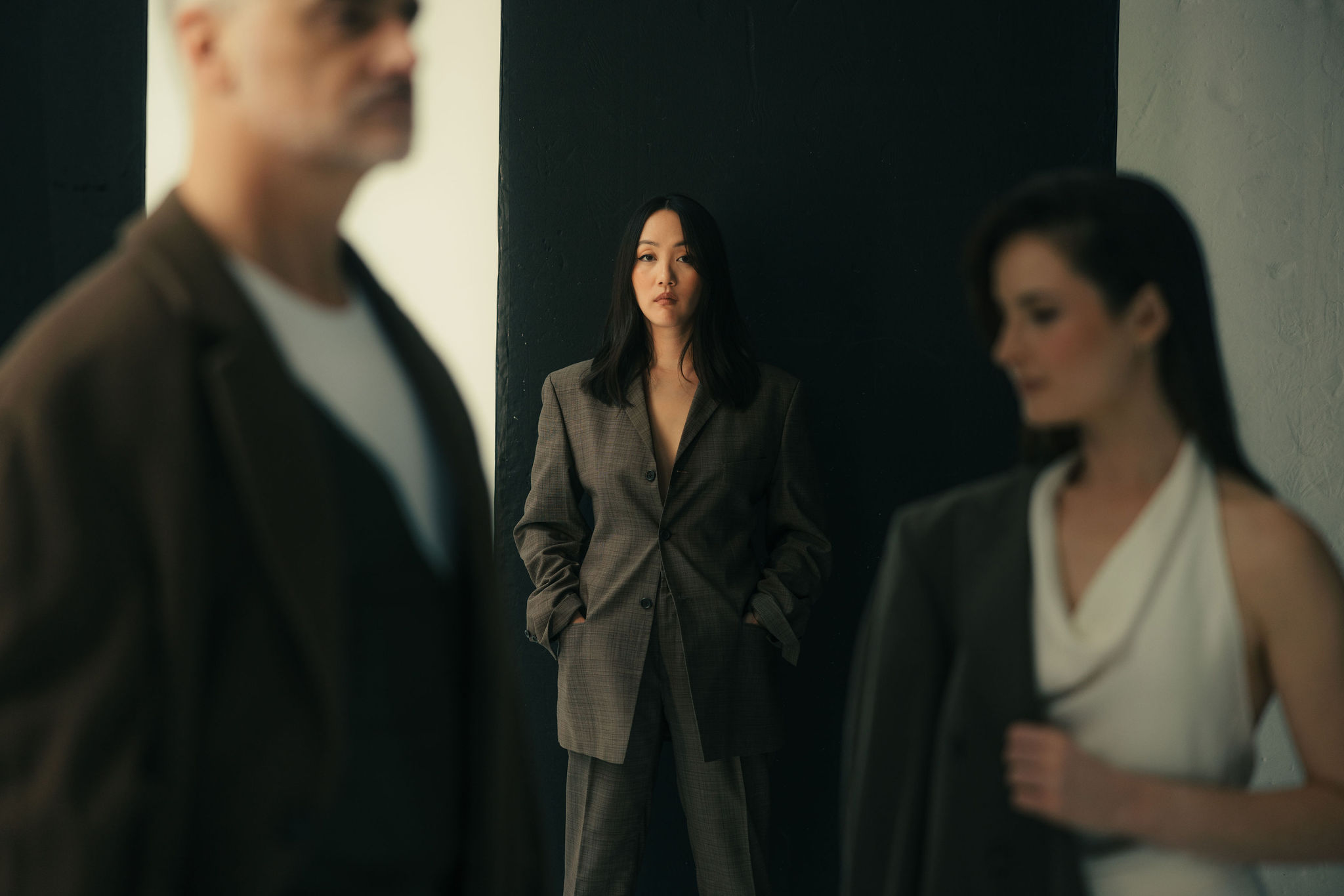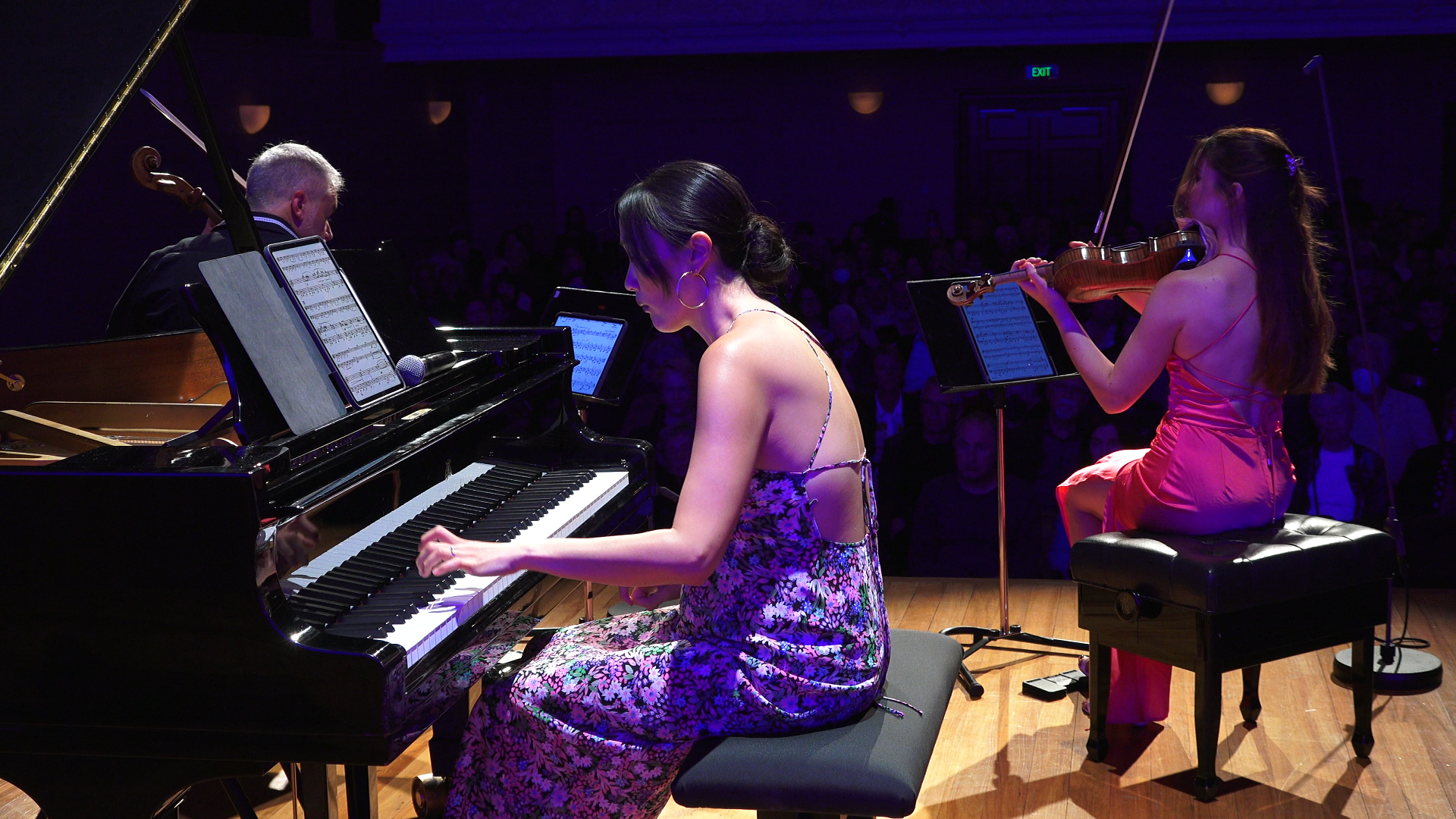2018 Regional Tour: Motueka
14apr7:30 pm2018 Regional Tour: Motueka
Event Details
NZTrio will perform at the beautiful Chanel Arts Centre in Motueka on Saturday April 14th at 7:30pm. Programme: Johannes Brahms (GER) – Trio in C major, op.87 Garreth Farr (NZ) –
Event Details
NZTrio will perform at the beautiful Chanel Arts Centre in Motueka on Saturday April 14th at 7:30pm.
Programme:
Johannes Brahms (GER) – Trio in C major, op.87
Garreth Farr (NZ) – Forbidden Colours
—
Claire Cowan (NZ) – Ultra violet
Maurice Ravel (FRA) – Trio in A minor
Tickets $20 Adults / $5 Students
Available for purchase from local retailer A Floral Affaire (03 528 4726) from late March.
Time
April 14, 2018 7:30 pm(GMT+00:00)
Location
The Chanel Arts Centre
Programme Notes
Johannes BRAHMS (GER; 1833 – 1897): Trio in C major, Op. 87, c. 28’
I. Allegro moderato
II. Andante con moto
III. Scherzo: Presto
IV. Finale: Allegro giocoso
You know what I think of Brahms: after Bach and Beethoven the greatest, the most sublime of all composers. ~ von Bülow.
This was 1882, the year that Hans von Bülow made that famous pronouncement, in a letter to his wife. Brahms had become the third of the three Bs.
During this time, Brahms was at the height of his powers. He had two hugely successful symphonies under his belt, as well as the German Requiem and the violin concerto, all of which were making him famous across Europe; Bülow himself was performing the first all-Brahms recital programme, bringing his piano music to the masses; and he was amassing a number of awards including two honorary doctorates, the Commander’s Cross from Meiningen, and the Emperor’s Order for Science and Art.
It was also the year that, after all these orchestral successes, he chose to go back to chamber music and song. It was almost 30 years since he’d written a piano trio: and he’d actually begun this two years earlier in Vienna as one of a pair – the other he destroyed! – but this one he deemed worthy of survival and took it with him (along with the string quintet Op 88) to work on over the summer at his favourite spa resort, Bad Ischl outside Salzburg, the scene of so many Brahms masterpieces. And this is one. It’s the most powerful of the trios, the most sophisticated in terms of texture and form, and also the most harmonically daring – listen out for a key change of just a semitone (!) in the first movement. Plus, of course, the totally sumptuous piano writing and the sheer abundance of tunes.
It will grab you right from the unison string opening – that first theme, and the even more beautiful second, underpin the entire trio. The second movement is the heart of the work, a theme and variations characterised by his favourite “Scotch snap” or “catch” rhythm – short-long pairs of notes – and an unbelievably beautiful Magyar inflected Brahmsian melody. Then an eerie little scherzo and lyrical trio, launched into at breathtaking speed: and finally, all the themes we’ve heard so far wrapped up into an exuberant, breath-taking finale.
Programme note by Charlotte Wilson
Gareth Farr (NZ; b. 1968): Forbidden Colours – c. 10’
Gareth Farr studied composition and percussion performance at the University of Auckland and later at Victoria University in Wellington where the characteristic rhythms and textures of the Indonesian gamelan rapidly became hallmarks of his own composition. Farr continued with postgraduate study at the Eastman School of Music in Rochester, New York, and after returning to NZ at the age of 25, Farr was appointed composer-in-residence by Chamber Music New Zealand, the youngest ever composer to hold that position. His music has been heard at, or especially commissioned for, high-profile events including the 50th anniversary of the New Zealand Symphony Orchestra, the opening of the Museum of New Zealand Te Papa Tongarewa, and the 2000 Olympic Games in Sydney.
Gareth writes: ‘I became intrigued by a phenomenon called “forbidden colours” which are unseeable by the human eye because their light frequencies automatically cancel each other out. The piece establishes itself as a blurry, impressionistic texture — but soon, things start popping into focus, and then sliding away again out of view. I have tried to create the musical equivalent of when you have to strain your eyes to make something out — to even ascertain if you’re looking at anything at all, or if it’s just a figment of your retinas.’
Claire Cowan (NZ; b. 1983): Ultra violet (CMNZ commission 2015) – c. 8’
Claire Cowan graduated from Auckland University in 2006 with honours, was composer in residence with the NZSO National Youth Orchestra that year, and won the NZSO-Todd Young Composer Award the following year. She has been composer in residence with Orchestra Wellington, Director of Blackbird Ensemble, which presents music-based physical theatre, and has performed in Strike Percussion Ensemble. She has written music for theatre, television and film as well as orchestra and chamber ensembles. In 2008 she lived in New York, where she worked with the underground puppet movement, eventually writing the score for an award-winning puppet movie Moonfishing. Her 2013 commission titled Subtle Dances has been one of NZTrio’s most performed works across New Zealand, Europe, and Australasia.
Cowan writes: ‘I learned that the mantis shrimp (which is the most lusciously hued crustaecean in the world) can see more colours than any creature on earth. Ultra Violet vision, at one far end of the colour spectrum, is only known to a few humans on Earth. But many birds and insects possess this quality. It is innate to their survival and navigation systems. This piece explores my continued fascination with the seemingly simple yet endlessly complex, through the growth and development of a single musical statement. What does it need to survive? How must it adapt to move forward? How will it change colour and mood with the simple addition of a non-related pitch? I think of myself as a bird, navigating through a musical landscape guided by intuition, and on a journey to create and discover colours beyond the edges of our visible spectrum.’
Maurice RAVEL (FRA; 1875 – 1937): Piano Trio in A minor, c. 28’
I Modéré
II Pantoum (Assez vif)
III Passacaille (Très large)
IV Final (Animé)
They say I’m dry at heart. That’s wrong. I am Basque! Basques feel things violently, but they say little about it and only to a few. ~Ravel
This mysterious, elusive, passionate, trio is the work that Ravel was writing when Europe found itself plunged into war. August 1914: he had been working on it for some time – six years, in fact, with his usual fastidiousness – and in earnest since March, taking it with him to St Jean de Luz in Basque country and telling his teacher, Gédalge, “I’ve written my trio. Now all I need are the themes.” What happened instead was the German invasion of France, which gave him all the impetus he needed. He rushed to finish it, “working on the Trio with the sureness and lucidity of a madman”, and immediately tried to enlist as a bomber in the French Air Force. He was rejected: his age (39), and something minor to do with his heart. But he continued applying, went through his training, until finally he was accepted as a truck driver into the 13th Artillery Regiment, driving munitions at night right on the front, under constant German bombardment, until the end of the war. Corresponding with Vaughan Williams throughout this period, he writes in June 1915:
It seems years since I left Paris: I have had moving, painful, and dangerous enough times to find it astonishing to come out of here still alive.
One fancies that you hear some of the threat facing Europe – and Ravel personally – in the largely dark, elusive colours of this trio. But for him it was also a celebration of life, a tribute to his Basque heritage of which he was tremendously proud: his mother was Basque, and her own great love of the Basque language and folk songs had a tremendous influence on his life and music. You can hear the rhythm of the zortziko, a very distinctive Basque folk dance, in the first movement – rhythm is key to this whole work, the second movement Pantoum being based on a Malaysian verse form in which the second and fourth lines of a four-line stanza become the first and third lines of the next. The third movement is a passacaglia on the piano’s opening eight-bar theme in the bass: and the final animé, constantly alternating between time signatures over magical harmonics and trills drives towards a brilliant coda. And that, of course, is only part of Ravel’s genius. The inexorable weaving together of melodies and harmony: the shimmering atosmphere; the classically perfect form. At first, it attracted little notice –France was in chaos – but that didn’t last for long. Jean Marnold writes, on its publication in November 1915,
‘There is little in the musical repertoire that one can compare it with… No matter whether in writing technique, harmony, polyphony, rhythm or inspiration, everything is new, personal, totally original, and simple – of the simplicity which we are born with, which is our secret, and which constitutes the perfection of our masterworks.’
Programme note by Charlotte Wilson


